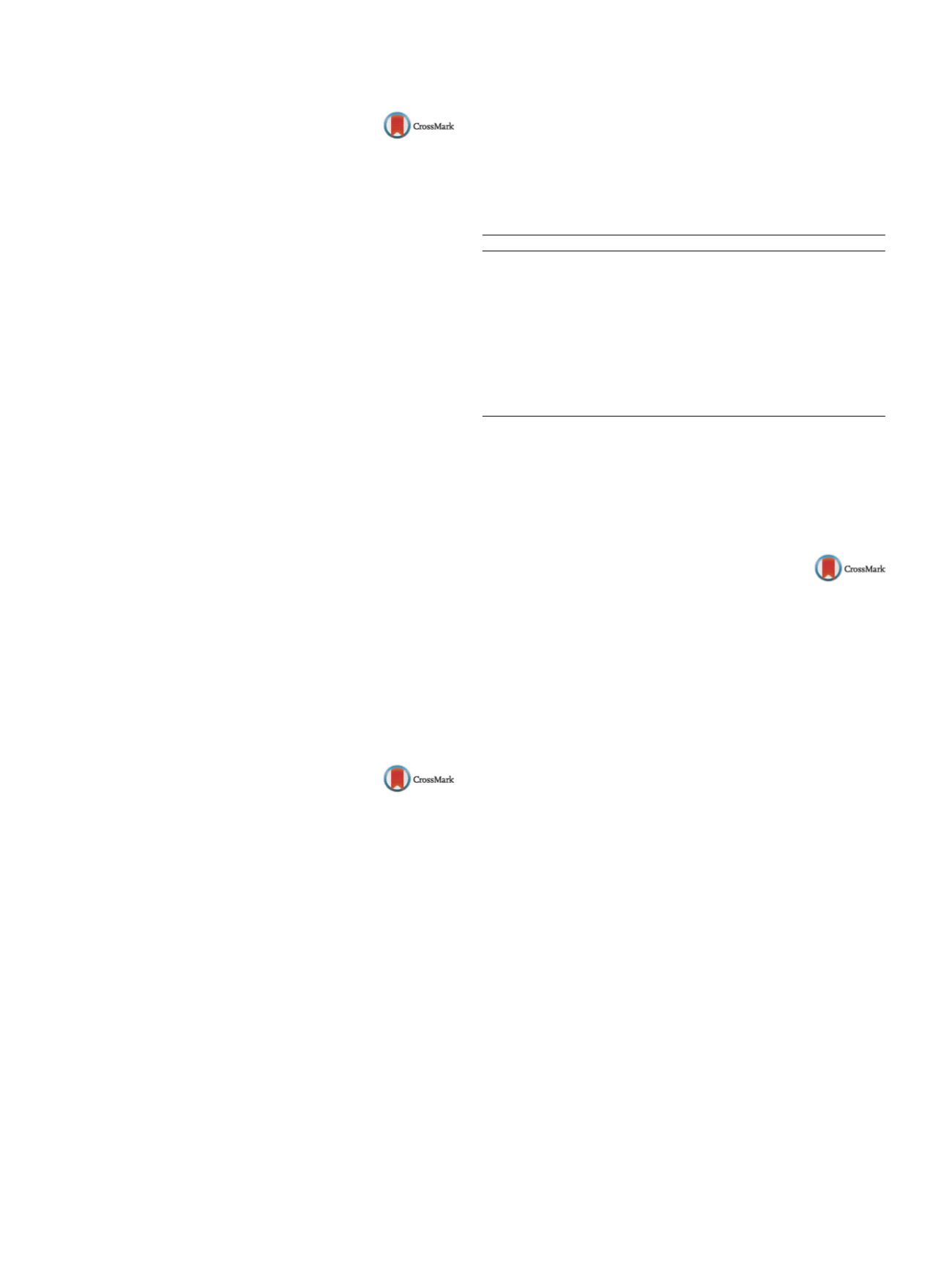

S140
25th European Congress of Psychiatry / European Psychiatry 41S (2017) S106–S169
EW0103
Targeting kynurenine pathway in
olfactory bulbectomised mice:
Inflammatory and neurodegerative
pathway of depression
Y. Bansal
∗
, A. Kuhad , R. Singh , P. Saroj
Pharmacology Lab, Panjab University, University Institute of
Pharmaceutical Sciences, Chandigarh, India
∗
Corresponding author.
Aims and objectives
The aim of study was to evaluate the phar-
macotherapeutic efficacy of NDGA in experimental paradigm of
depression i.e. olfactory bulbectomy (OB) specifically targeting
kynurenine pathway.
Materials and method
Depression like behaviours was induced
in OB mice and evaluated by assessment of various behavioural
(olfactory deficit test, forced swim test, splash test, open field
test, sucrose preference test), biochemical (catalase, reduced glu-
tathione, SOD, nitrite, MAO-A, MDA, corticosterone), inflammatory
cytokines (TNF- , IL-1 , IL-6, IFN- ) levels and alterations in delta
sleep was recorded using EEG. Kynurenine pathway metabolites
were determined in plasma and brain using HPLC method. After
14 days post-surgery, olfactory bulbectomized (OBX) mice were
administered nordihydroguaiaretic acid (5 mg/kg, 10 mg/kg and
25 mg/kg) daily i.p.
Results
We have developed a newHPLCmethod for simultaneous
estimation of monoamines and kynurenine pathway metabolites
in plasma and brain samples of mice. Chronic treatment with
nordihydroguaiaretic acid significantly restored all behavioural,
biochemical and neurochemical alterations in OBX mice and
increase in quinolinic acid and decrease in kynurenic acid point
out the neurodegeneration hypothesis of depression.
Conclusion
Nordihydroguaiaretic acid showed potent neu-
ropharmacotherapeutic effect in OBX mice by virtue of its
strong anti-oxidant, anti-inflammatory, anti-stress and by restor-
ing quinolinic acid levels.
Disclosure of interest
The authors have not supplied their decla-
ration of competing interest.
http://dx.doi.org/10.1016/j.eurpsy.2017.01.1972EW0104
Prefrontal theta cordance in the
prediction of antidepressant response
to various classes of antidepressants
in patients with depressive disorder
M. Bares
1 ,∗
, T. Novak
1, M. Brunovsky
2, M. Hejzlar
11
2nd Department, National Institute of Mental Health Czech
Republic, Klecany, Czech Republic
2
EEG Department, National Institute of Mental Health Czech
Republic, Klecany, Czech Republic
∗
Corresponding author.
Introduction and objectives
Previous studies demonstrated effi-
cacy of reduction of QEEG prefrontal theta cordance (RC) after
the first week of treatment in the prediction of antidepressant
response.
Aims
The study aimed to compare the ability of RC in the predic-
tion of response to various antidepressant classes.
Methods
All patients (
n
= 142) were treated with antidepressants
(SSRI-58, SNRI-47, NDRI-22, NaSSA-15) for
≥
4 weeks. Response
was defined as MADRS reduction
≥
50%. EEG were performed at
baseline and week 1 of treatment and cordance was calculated for
3 prefrontal electrodes (Fp1, Fp2, Fz).
Results
Logistic regression identified RC as a predictor of
response to SSRI, SNRI and NDRI but not for NaSSA. Predictive
parameters of RC for response to mentioned antidepressant classes
are displayed in the
Table 1 .Areas under curves of ROC analysis (AUC) of RC for response predic-
tion were not significantly different among antidepressant classes.
Conclusion
The predictive efficacy of RC for response to SSRI, SNRI
and NDRI was comparable.
This study was supported by the grants of MH CZ nr.15-29900A,
MH CZ – DRO (NIMH-CZ, 00023752) and by the project Nr. LO1611
from the MEYS under the NPU I program.
Table 1
SSRI
SNRI
NDRI
n
58
47
22
AUC RC week 1
(95%CI)
0.77 (0.65–0.87) 0.77 (0.62–0.88) 0.87 (0.66–0.97)
Positive predictive
value of RC
week 1 (95%CI)
0.81 (0.64–0.93) 0.72 (0.51–0.87) 0.91 (0.59–1.00)
Negative
predictive
values of RC
week 1 (95%CI)
0.73 (0.52–0.89) 0.84 (0.60–0.97) 0.82 (0.48–0.98)
Accuracy of
prediction
0.78
0.77
0.86
Disclosure of interest
The authors have not supplied their decla-
ration of competing interest.
http://dx.doi.org/10.1016/j.eurpsy.2017.01.1973EW0105
Major depressive disorder:
Recurrence risk factors
R. Ben Soussia
∗
, S. Khouadja , I. Marrag , S. Younes , M. Nasr
Psychiatry, CHU Tahar Sfar, Mahdia, Tunisia
∗
Corresponding author.
Introduction
In spite of the frequency and the gravity of the
depressive episodes, the major depressive disorder (MDD) is diag-
nosed and treated today insufficiently and the risk factors of its
recurrence are little approached.
Aims of the study
Describe the socio–demographic, clinical and
therapeutic characteristics of patients with MDD and identify the
factors involved in the recurrence risk.
Methodology
This is a retrospective study carried out in the uni-
versity hospital of Mahdia, Tunisia during two years. We have
included patients with a follow up for at least two years and
diagnosed with MDD, isolated episode or MDD, recurrent episode
according to the DSM-IV-TR criteria. Data collectionwas performed
using two pre-established questionnaires respectively with 51 and
92 items. We have estimated the time to recurrence with the
Kaplan-Meier estimator.
Results
We have collected 150 patients. The time to recurrence
was 109 months. Five factors were associated with recurrence:
early age at onset of the disorder, family history of mood disorders,
severity of the index major depressive episode, persistent residual
symptoms and ceasing treatment.
Conclusion
Depression is a very common mental illness that
is highly recurrent in individuals. There is great interest in the
development of strategies that might reduce the recurrence of
depression.
Disclosure of interest
The authors have not supplied their decla-
ration of competing interest.
http://dx.doi.org/10.1016/j.eurpsy.2017.01.1974

















